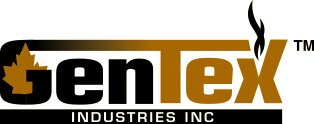Hot Oil Unit: How to Prepare for Winter
At GenTex, we often see hot oil units come in, only after a breakdown. Most failures we see could have been avoided with preventative maintenance, especially before winter arrives.
When temperatures drop, both your chassis and the back end (your hot oil unit) face serious challenges: oil thickening, restricted flow, frozen valves, and reduced heat transfer. These issues can affect performance, efficiency, and overall safety.
With a few simple maintenance steps, you can protect your equipment and avoid costly downtime. Here’s how to properly prepare your equipment for reliable performance all winter long.
1. Drain and Clean the System
Start your winter prep by removing any moisture and buildup from the system.
Drain all water or condensation from low points and tanks.
Clean filters, strainers, and catch pots.
Flush out sludge or oil residue that can harden in cold weather.
2. Inspect Component Oil Condition
Cold weather can cause critical component failure with old, degraded, milky oil.
Check oil color and clarity — dark, burnt, or cloudy oil should be replaced.
Check triplex power end, oil level and condition.
Keep hydraulic oil at recommended viscosity for optimal efficiency.
3. Protect Lines, Coils, and Valves
Frozen lines or valves are a leading cause of winter downtime.
Drain unused circuits and cap them securely.
Inspect your coils and piping for leaks or damage.
Ensuring proper blow down and freeze protection procedures are followed.
For extra protection, insulate exposed lines and valves using coolant heat loops and insulation.
4. Heater (TEXHEATER or ThermoGen) Prep
Your heater is the heart of the hot oil unit — and it needs to perform reliably in all conditions.
Clean out carbon and soot buildup from the heater and components.
Inspect the nozzle, ignition coil & igniter, and safety shutdowns.
Test atomizing air and fuel along with blower.
5. Test Control Systems
Accurate controls are crucial for maintaining steady operations and help from preventing unnecessary downtime.
Verify temperature sensors, thermometers, and safety shutdowns are working properly.
Inspect wiring and connections for corrosion or wear.
Check that your control box is sealed from moisture and weather exposure.
6. Inspect Hoses, Piping and High-Pressure Connections
Cold weather can make hoses brittle and cause fittings to loosen.
Check for cracks, leaks, or wear along hoses.
Inspect quick connects and high-pressure connections for damage or corrosion.
Replace worn components before they fail under pressure.
7. Warm Up the System Gradually
A controlled warm-up helps your hydraulic oil reach operating temperatures. So, when starting your hot oil unit in cold weather:
Run at hydraulics long enough to bring hydraulic oil temperature to 20°C (70°F) before bringing hydraulic components to full load.
Avoid sudden high heat that can cause thermal shock to the coils.
Monitor flow rates and pressures closely as the fluid temperature increases
Avoid shutting down heater quickly, and allow for proper cool down before completing operations
8. Keep Your Unit Covered and Dry
If your unit will sit idle for periods of time:
Drain fluids from inactive circuits/loops.
Routinely drain air tanks.
Keep cabinets and control panel covers secure.
Wash excessive road grime/salt before parking your unit.
Preventing Breakdowns with a Simple Winter Routine
Most hot oil unit failures we see at GenTex come from reactive maintenance—fixing problems after they happen. A consistent, simple winterization routine prevents those issues before they start.
Take time to drain, clean, insulate, and inspect the back end of your unit before temperatures drop. You’ll extend your system’s lifespan, improve performance, and save on costly mid-season repairs.

